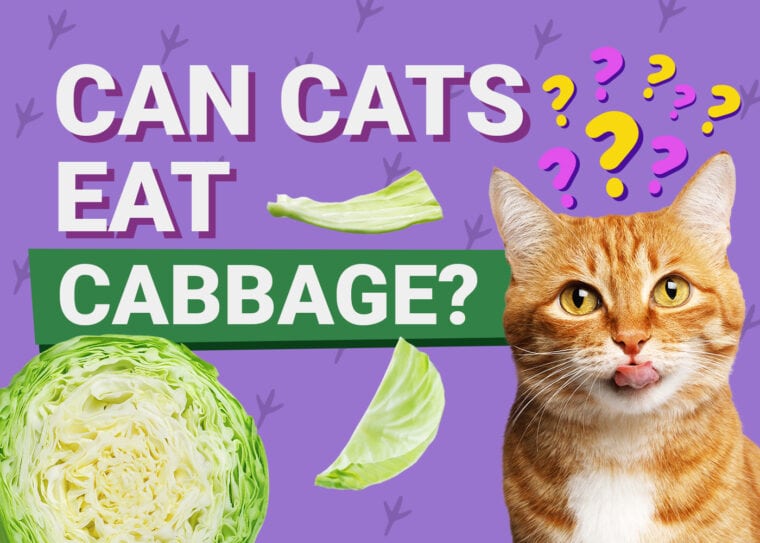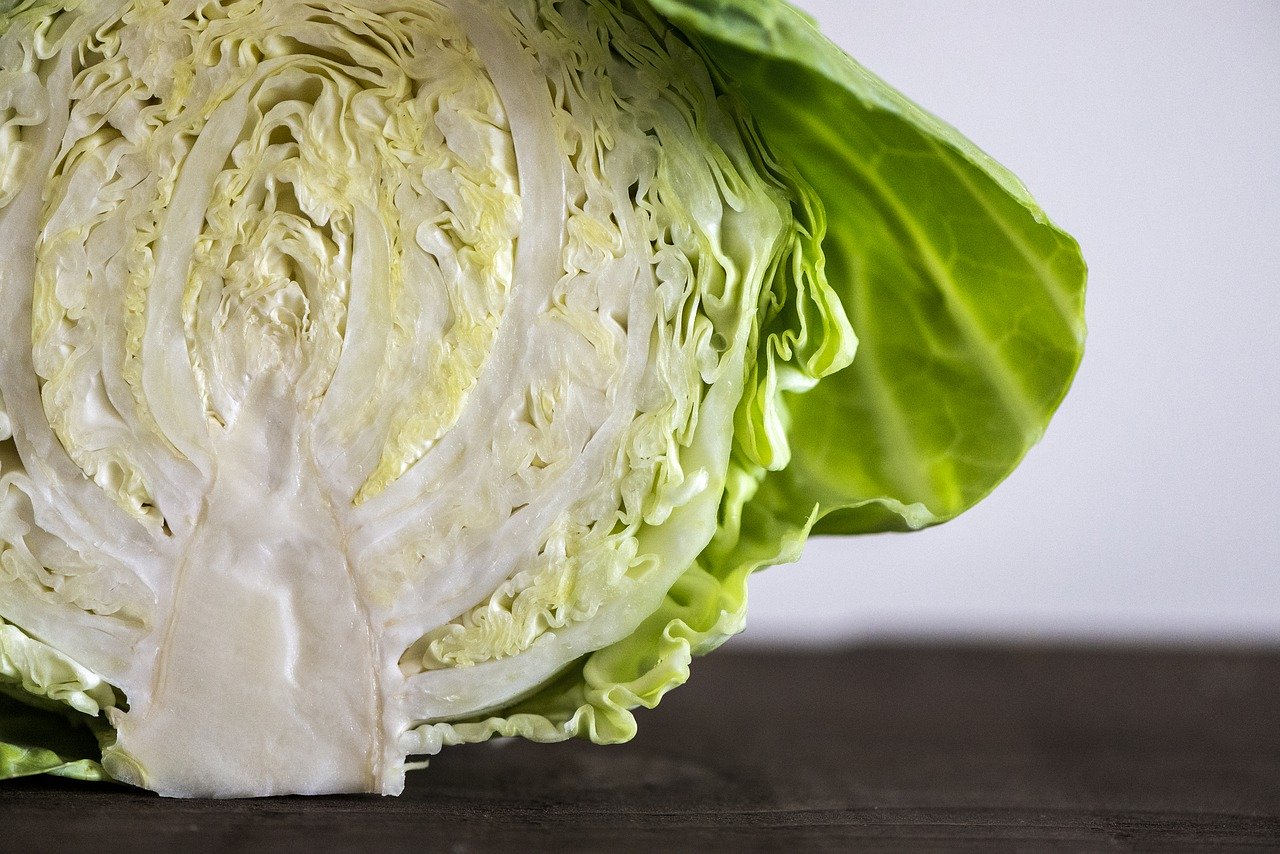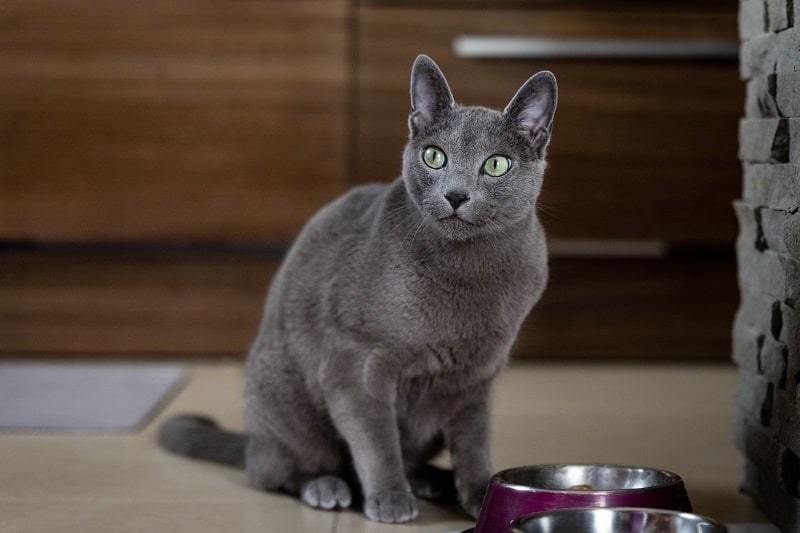
Since cats are carnivorous, it’s hard to imagine them munching on leafy green vegetables like cabbage. That said, some cats have what we might call “unusual” tastes, inspiring cat parents to dish up a moderate serving of their feline friend’s favorite veg now and then to give them a vitamin boost or simply because their cat enjoys it. Cabbage is one such vegetable that cats can safely eat in moderation.
In this post, we’ll share the potential benefits of cabbage for cats, how to serve cabbage when feeding it to cats, and take a look at which other vegetables are safe for cats.
Is Cabbage Safe for Cats?
Yes, cabbage—including red cabbage—is safe for cats as long as it’s only fed in moderation and is prepared properly. It should be cooked (boiled or steamed) and shredded for your cat due to the presence of thiocyanate1, a compound found in cruciferous vegetables like cabbage, broccoli, Brussels sprouts, and kale among others.
As explained by Dr. Beth Turner from Preventative Vet2, thiocyanate can be harmful to the thyroid gland if fed over a large period of time and in large quantities.
If you cook cabbage before giving it to your cat, it will bring down the thiocyanate levels inside it, therefore making it safer if you feed it on a long-term basis. In addition, cooked cabbage is much easier for cats to digest, which means less chance of a stomach upset.
Cabbage should be introduced into your cat’s diet gradually and in small amounts (more on this below). Bear in mind that any cabbage you feed to your cat should be completely plain, not seasoned with oils, salts, spices, herbs, or garlic.
On that note, avoid feeding cabbage-based foods like coleslaw because it contains a number of other ingredients, sauces, and seasonings (dressing, onions, salt, sugar, etc.) that might not sit well with cats.

How Much Cabbage Can My Cat Have?
Dr. Beth Turner recommends feeding cats one or two teaspoons of cooked cabbage over a 1-week period. Vegetables don’t naturally make up any part of a cat’s diet because they’re carnivorous animals, so feeding too many vegetables or introducing them too fast could result in a stomach upset or, as explained above, thyroid troubles.
Vegetables should only ever supplement your cat’s main diet, not be a large part of it. Cats are simply not meant to be vegetarian—they need a complete, balanced diet consisting of animal proteins and various nutrients like vitamins, minerals, and fatty acids. That said, the right amount of safe vegetables like cabbage may offer your cat a few nutritional benefits.

Is Cabbage Healthy for Cats?
Though cats don’t need vegetables in their diet, some, like cabbage, may give the digestive system a boost because it’s a source of fiber3. It’s also a good source of vitamin C, vitamin K, and antioxidants, which help protect against free radicals and may contribute to reduced cancer risk.
Moreover, anthocyanin4, which is a compound found in red cabbage, may contribute to lowering the risk of heart disease. There may also be aesthetic benefits to eating cabbage, as it could help improve cats’ skin and coat condition.
Which Other Vegetables Are Feline-Friendly?
Plenty! The following vegetables are safe for cats when cooked, prepared plain, cut into bite-sized pieces if necessary, and fed only as an occasional snack:
Knowing exactly what your feline companion can and cannot eat will help you become the best pet parent. Recognizing that not all cat bowls are equal is also key! The Hepper NomNom Cat Bowl sets itself apart from traditional options by catering to the specific needs of cats. The innovative design offers whisker relief via shallow dishes and promotes digestion with a slight bowl elevation. Find out if the Hepper NomNom is right for your cat by clicking here.
At Pet Keen, we’ve admired Hepper for many years and decided to take a controlling ownership interest so that we could benefit from the outstanding designs of this cool cat company!
Final Thoughts
Though cabbage isn’t the kind of food cats would hunt down in the wild (cue mental images of cats furiously attacking cabbage roots in a field somewhere before rolling away their prize), that doesn’t mean that they can’t enjoy it and reap the benefits as long as they’re not getting too much!
As with any vegetable you start giving your cat, be sure to introduce cabbage gradually and in small amounts to minimize the risk of a stomach upset. It’s also best to check your cat’s diet, any dietary changes, and any new and supplementary foods you give them through with your vet to make sure your cat is on the right track nutritionally.
See Also:
- Can Cats Eat Lettuce? Vet-Reviewed Facts & FAQ
- Can Cats Eat Green Beans? Vet Reviewed Benefits Explained
Featured Image Credit: SherSor, Shutterstock







